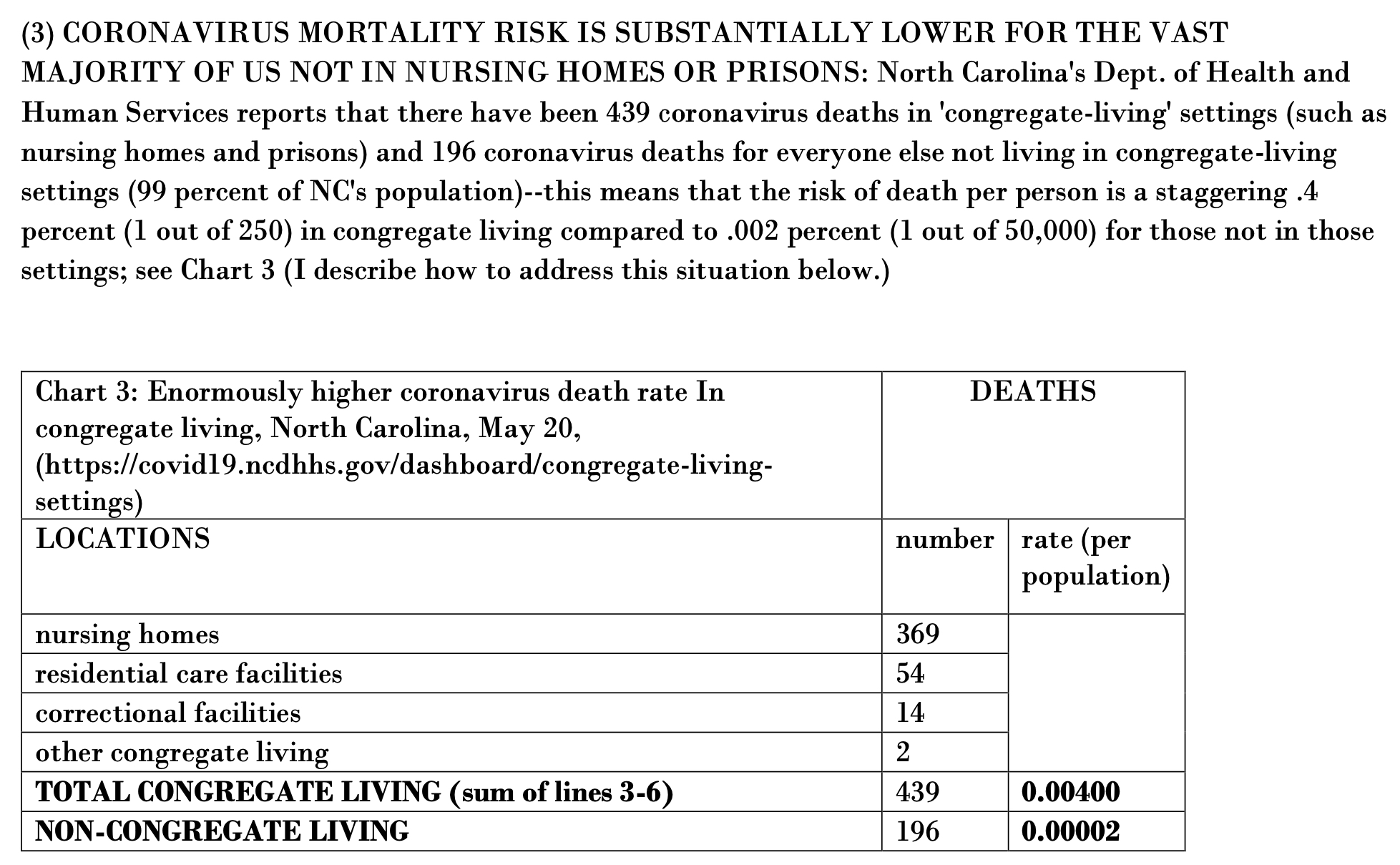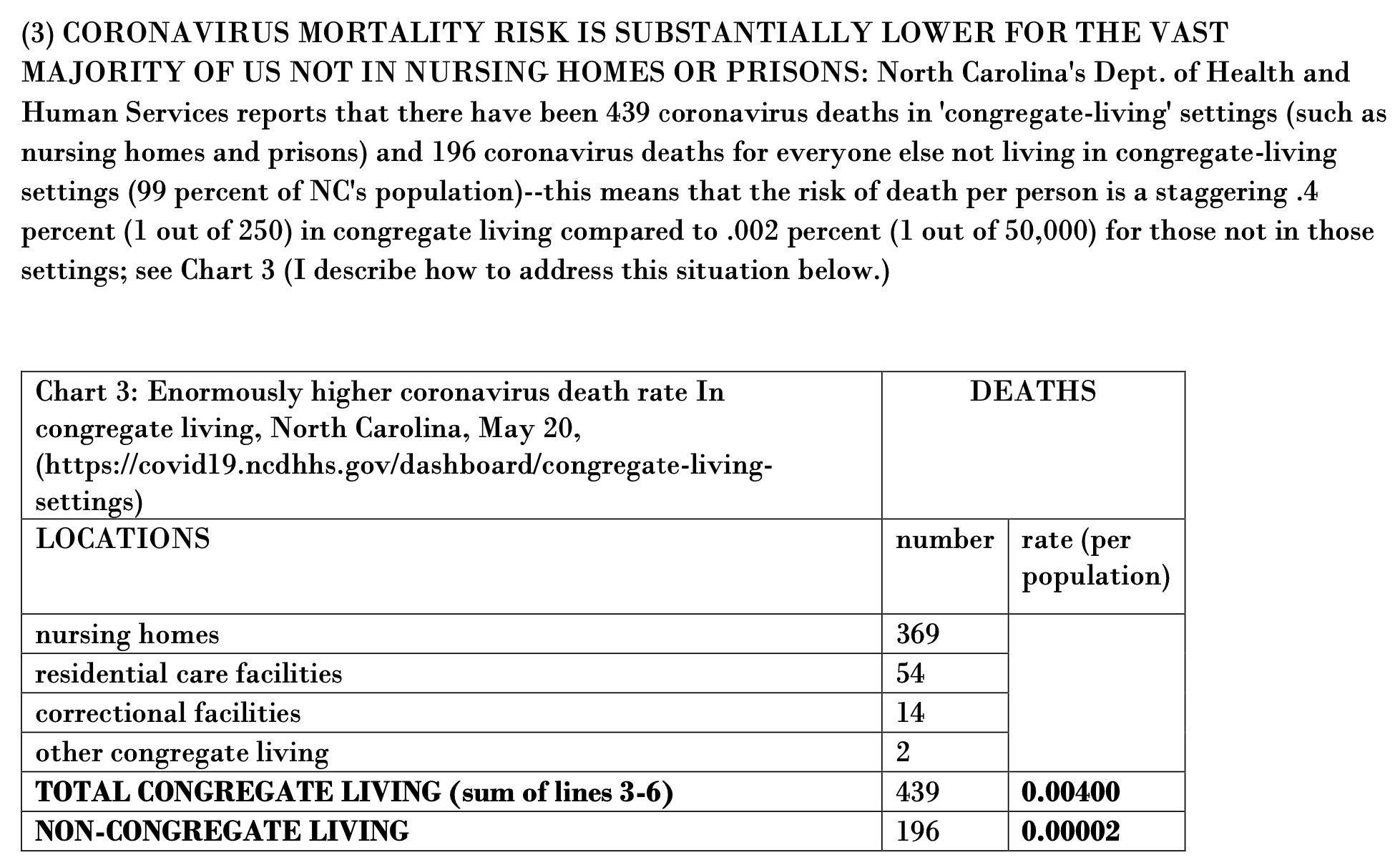UNC-Chapel Hill economist Martin Zelder submits the following column:
NORTH CAROLINA’S REMARKABLY ENCOURAGING CORONAVIRUS SITUATION
Coronavirus numbers are everywhere you look, and the source of anxiety. Some numbers — like the total number of recorded cases since the start of the epidemic — must, by their very definition, grow larger every day. So, the number of cases — out of context — provides little useful information, although it is emphasized with alarm by Roy Cooper and Mandy Cohen.
I have written previously expressing serious concerns about the accuracy of the state’s numbers, given the opaque way in which the state is presenting them. But let’s take the state’s numbers as valid, and see what they really tell us.
Falling hospitalization rates: The raw number of people in the hospital with coronavirus has in fact risen 11% since June 13. This is not surprising since the number of diagnosed coronavirus cases has risen 38% since June 13. These two facts, combined, tell us that the fraction of coronavirus patients in the hospital is low — 1.7% — the lowest number we’ve seen since the start of the epidemic:

And you can easily check my math based on the state’s own data: 915 hospitalized divided by 54,543 cases is 1.7%. So, this tells us that while case numbers are growing, the fraction of those cases sick enough to be in the hospital is actually falling. This is clearly good news.
Falling death rates: The raw number of total coronavirus deaths has risen since the start of the epidemic, and is now 1,251 (or about 120 deaths for each 1 million persons living in North Carolina). Since June 13, the number of deaths has risen by 13%, much slower than the growth in new cases (which we already saw was 38%). This means that the coronavirus death rate, as a fraction of those hospitalized, has fallen for weeks and is at its lowest level (2.3%) since April 15:

And you can easily check my math based on the state’s own data: 1,251 deaths divided by 54,543 cases is 2.3%. So, this tells us that while case numbers are growing, the fraction of those cases who are so sick they do not survive the virus is getting smaller. This is clearly good news. And, North Carolina’s mortality rate is low compared to other states — in fact, 17th lowest among the 50 states (https://www.worldometers.info/coronavirus/country/us/). This, again, is good news.
It is understandable that most of us have been concerned about the coronavirus situation in North Carolina. But the extent of that concern should be viewed in the face of these indisputable and reassuring numbers. And responsible public policy must reflect these realities. Let’s hope that Roy Cooper heeds them.


